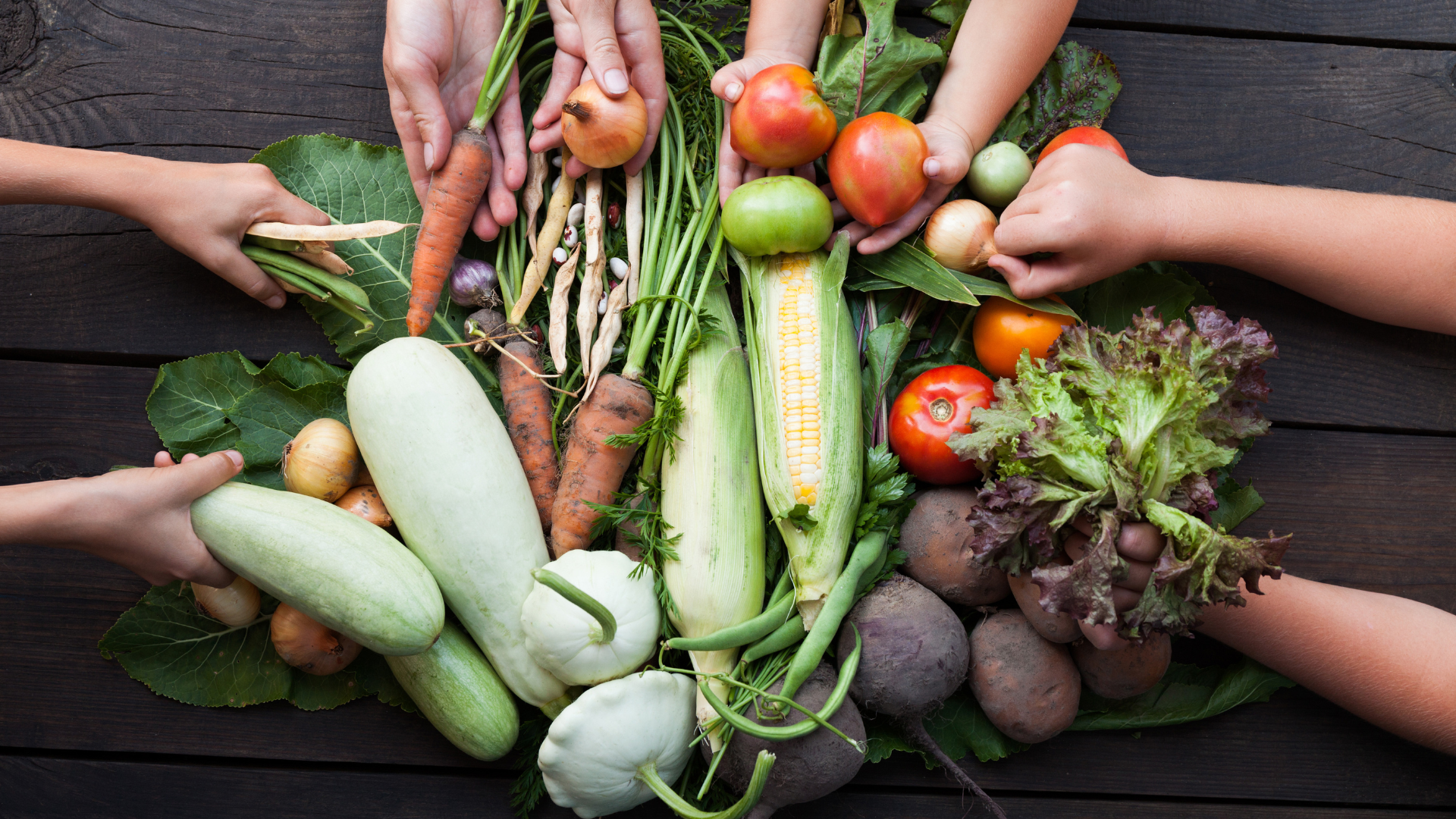Food waste is currently one of the world's biggest global challenges with environmental, economic, and social impacts. On a smaller scale, restaurant food waste also impacts the function, profit margin and success of the business.
This means that exploring how to reduce waste from food production is a significant challenge that every restaurant business should undertake. But how and where should you begin?
Here are the top 14 ways to not only reduce food waste but to maintain a minimal level of waste production within your restaurant.
1. Monitor and Track Food Waste Regularly
The first step to any challenge is working out what is actually being produced. Monitoring how much waste your restaurant produces- from customer plates to expired inventory- allows you to track how your food is being used.
Making a logbook of how much food waste is being produced or having a monthly food waste audit will allow you to work out which ingredients are worth the cost, what items should be cut down on, and the amount of food you should be purchasing from the beginning.
2. Implement Portion Control and Use Standardised Recipes
Cutting down on food waste isn't only achievable from the kitchen and inventory; you can cut down on wastage from customers as well. Working out the perfect ratio of ingredients so that every plate is scraped clean may sound simple, but it is often very difficult to achieve.
Test out different portion sizes to make sure you're not overloading a plate only for a customer to leave it for the rubbish. You can also make sure each recipe you build or use is standardised with portion control included in the ingredient amount.
3. Ensure Proper Storage and Rotation of Food Products
Proper food storage seems like a no-brainer, but it is often the downfall of many storerooms and kitchens. When food goes off or rots because it was not stored correctly, it can be a huge waste of time and effort.
Make labelling your number one priority when prepping food, and check the temperature requirements for each ingredient you purchase. It is also important to store food correctly by putting each type of food (meat, dairy, vegetable) in its own sections so they don't cause contamination.
Keeping your ingredients on a rotation when new stock arrives is also important. Place older ingredients towards the front so they’re used first and don’t get hidden behind the newer produce and expire!
4. Implement FIFO (First In, First Out) Practices
Reducing kitchen food waste can also be achieved by making sure your ingredients stay fresh and usable. The best way to do this is by implementing FIFO or First In, First Out practices.
FIFO means that with each new introduction of ingredients, the old stock will be placed at the front of the shelf or top of the container, meaning that the food first in, will be first used. This keeps everything fresh and the kitchen workflow smooth.
5. Keep an Eye on Use-By-Dates
A restaurant's food waste can be largely attributed to the expiration of ingredients. Keeping an eye on use-by-dates not only saves on food waste but helps the business save money by not letting purchased stock go in the garbage.
Keeping track of expiration dates, best before, and use-by-dates is essential for reducing food waste. This can be done by clearly labelling containers with the expiration date.
6. Develop a Strategy for Dealing With Surplus Food
Food waste management can be a daunting task when you don't have the strategies you need. Developing a strategy to deal with surplus food during a food service is a great start to managing your food waste.
Creating daily specials for unused prepped ingredients is a great way to cut down on any surplus you may have in the kitchen. This could look like a changing daily soup or salad special that uses up excess prepped vegetables or combining new ingredients with unused food to create a daily discounted dish.
7. Review Menus Regularly
Reviewing your menus allows you to take the popularity of dishes as well as seasonality into account. Food waste can often occur if you are buying ingredients for dishes that aren't selling, so cutting down on unpopular dishes easily achieves a reduction in wasted food.
Looking into the seasonality of vegetables and other ingredients may also help your menu thrive that little bit extra. Make sure your winter menu consists of more filling, warming foods that are preferred in cold weather, while your summer menu has lots of refreshing flavours.
8. Make Sure Food Is Labelled Correctly
Wasted food can really come down to simple mistakes, like mislabelling in the storeroom. Making sure all of your prepped and stored food is properly labelled and placed on the correct shelf ensures food doesn't expire or rot. This can be done by setting aside time in your or an employee's work routine to go through the storeroom and check each label is correct.
Excess food waste in restaurants can be easily avoided through correct labelling and established work routine.
9. Encourage Customers to Take Home Leftovers
Taking home leftover food is a guaranteed way to reduce food waste output. When in conjunction with implementing proper portion control, having customers take home leftover food allows for your food waste to be minimised without any hassle.
Restaurants reducing food waste is not even the best reason to encourage taking home leftovers either, because what customer doesn't want delicious food for lunch the next day?
10. Donate Excess Food to Local Food Banks or Shelters
Restaurant food waste, from prepped ingredients to a surplus of actual dishes, can be avoided by donating excess food. Local food banks, charities and shelters often have schemes in place for restaurants in the area to make and donate meals.
Food insecurity has become quite a difficult challenge for those that experience homelessness, so food donation not only provides food waste solutions but allows you to give back to the local community.
11. Utilise Technology Such as Inventory Management Systems
The food sector has improved immensely when it comes to technology, with better reservation systems, contactless payment and even QR code menus. Now, food cost percentage can be more easily calculated if you invest in Inventory Management Software Technology.
Tracking food prices, wastage and increased/decreased usage of certain ingredients can be done all in one place. This allows for ease of workflow and of course, a more accurate determination of what your business' actual food cost is.
12. Train Employees on Food Waste Reduction Techniques & Best Practices
Of course, education is key in any business. Talking to your staff about the need for reducing food wastage for environmental, social and business purposes is essential to a thriving workplace.
You can offer training when it comes to inventory processes, including tracking and measuring food waste. When building out your menu with your chef or cooks, make sure to prioritise education on food seasonality, waste management and portion size control.
13. Educate Customers on Menu Options That Reduce Food Waste
Providing tips on a menu may not seem like a good idea, especially when 'the customer is always right' rule still reigns terror. However, many individuals now like to see whether their meal is eco-friendly and sustainable.
Putting small notes on your menu, such as 'No food waste produced in this meal!' allows customers to see how you are contributing to helping the environment. Better yet, noting that all food waste is composted, donated and repurposed is a great way to show your environmental impact as well.
14. Compost Food Scraps
Finally, if you've got the space for a compost bin, throwing away food scraps will become that much easier. Food wastage will always be around when cooking, from fruit peels to vegetable ends and even eggshells.
If you've got a kitchen garden or even some growing herbs, having compost means all your organic waste can go towards making great fertiliser for growing your food.
Food waste management may be daunting if you're just starting out, but it's a win-win situation for all those involved. Customers will get fresh dishes and delicious leftovers, your restaurant will have a reduced environmental impact, and your business will be saving on food costs left, right and centre!
Putting effort into educating yourself and your staff on how to reduce food waste is a guaranteed investment for your restaurant business in the long run. So, how will you begin your food waste management journey?
For more insights into saving time and money, take a look at our Hospitality Operations Webinar on Demand here:




